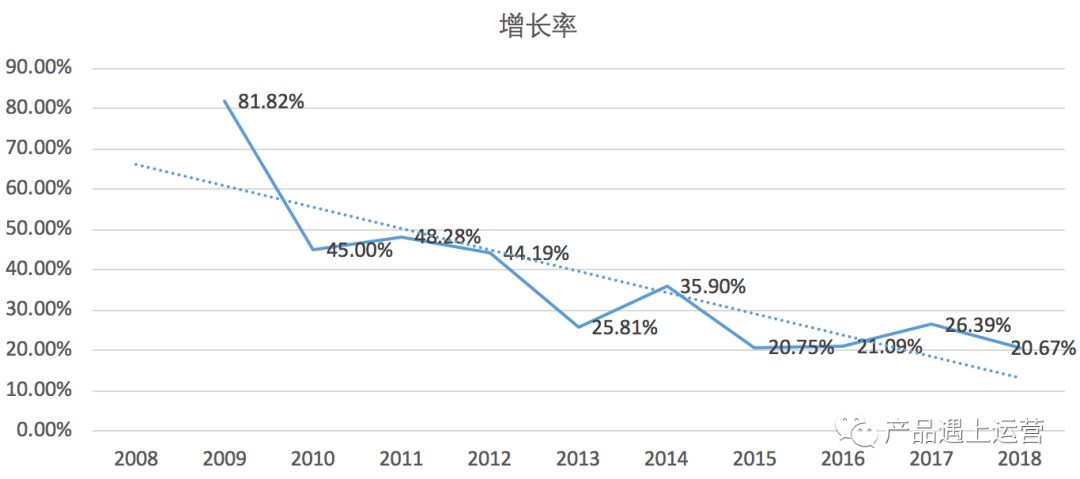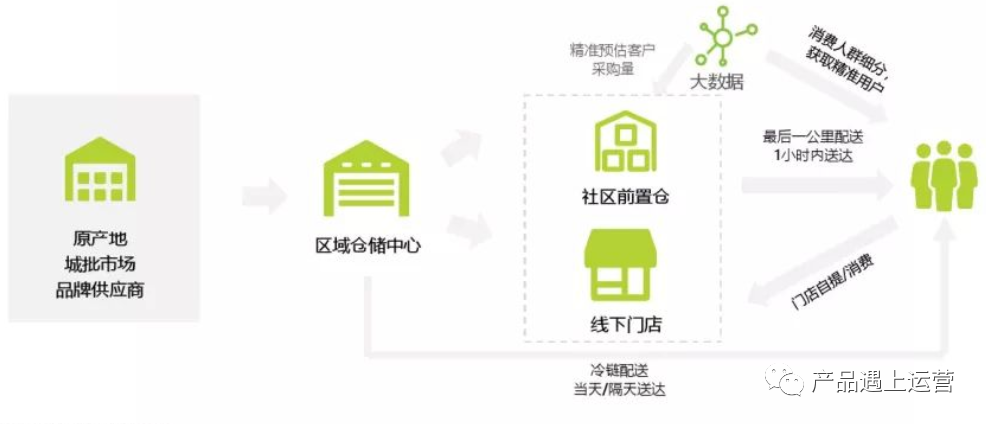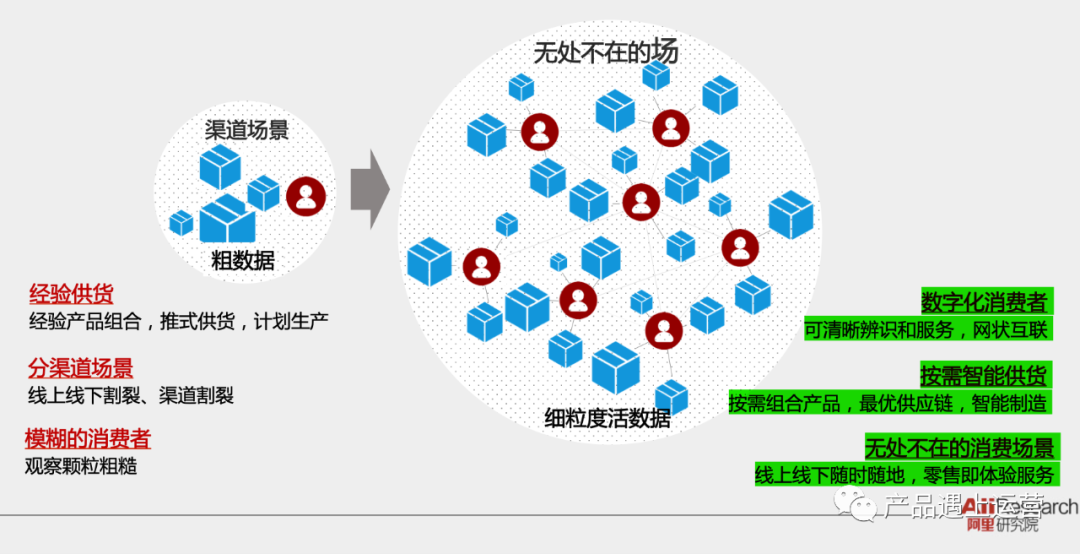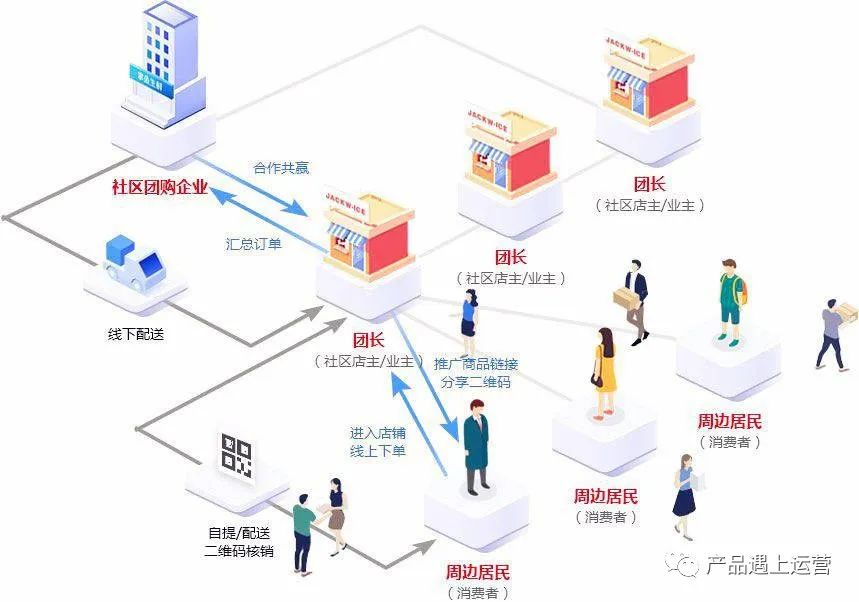How will the unprecedented Black Swan incident change the fate of new retail?
Editor’s note: This article is from the WeChat public account “Product encountered operation” (ID: alden_xu) , author : Xu Xiaopeng.
The new crown epidemic that has swept the world has suddenly affected the way of life and work for all humankind. As a black swan event that shakes the world, its impact on the entire world’s economy, industry and business is undoubtedly profound.
So, how will it change the fate and progress of new retail? Let’s analyze the key elements of new retail, retail formats, business models, consumption channels, and marketing scenarios. What are the important changes after the epidemic?
1. Breakthrough progress in food and freshness penetration
In recent years, the electricity supplier penetration growth continued to slow down (refer to ” Talking about new retail (2): the retail environment and the difficulties of online and offline “):

E-commerce penetration trend
The online penetration rate of each category is still lower than offline. Even the 3C with the highest penetration rate, online sales are less than 40%. The penetration rate of major consumer goods such as washing and food is less than 10%. The most terrible thing is that the boss has a hard time generating fresh e-commerce, with a penetration rate of only about 6% in 2019, and most of the fresh consumption is still offline.
Then the epidemic came.
After the outbreak, the proportion of online shopping has increased dramatically. The opening hours of supermarkets and vegetable markets are shortened.Fearful in all occasions, these main factors driving online sales will gradually disappear after the epidemic, however, this is also a rare opportunity to quickly change the old consumption habits. Especially middle-aged and elderly people used to go to the vegetable market early in the morning every day, but they did n’t want to go to the supermarket every day. On the other hand, online shopping would n’t be expensive. But during the epidemic, new things have to be accepted, and consumption habits have changed and will continue to a considerable extent.
Under this condition, the penetration rate of washing, food, fresh food, etc. is low, but it has a great impact on people’s lives, and the category that accounts for a relatively high proportion of middle-aged and elderly groups is expected to significantly increase the penetration rate. Based on this trend, the following series of changes will be promoted and accelerated for reference by entrepreneurs who are eager to change and optimize their business methods.
2. “Arrived” + “Home” become standard for small shops
Some of the offline stores before the epidemic have settled in platforms such as Meituan, Hungry, JD.com, etc., and provide “home” services through platform buyer mode or self-delivery. But overall, the reach of home-based stores is still limited, especially in second-tier or below cities. During the epidemic, small stores that do not support the home-to-home mode have been long-term. Therefore, it is common to access online platforms and provide “home-to-home” scenarios outside the “home-to-shop” scenario.
3. Rapid development of cold chain logistics
The outstanding problems of China’s cold chain logistics are inadequate infrastructure, low per capita storage capacity, a serious “broken chain” phenomenon, and a high rate of corruption. Driven by the strong demand for the fresh food online penetration rate, it will inevitably lead to larger-scale investment, accelerated construction of cold storage, rapid improvement of the system, improved refined management capabilities, and further reduced costs.
4. The model of front store and back store is spreading rapidly
Although cold chain logistics will enter a period of rapid development, long-distance distribution is still slow and costly. From the distribution model in the figure below, we can see that in the fresh and daily supply, front warehouses and offline shops are important close buffer layers, which greatly reduces the distance between people and goods and reduces transportation costs. And attrition costs.

Fresh food delivery model
After offline stores generally access the “home” mode, the inventory system will inevitably provide interfaces for online system access and management. Under this condition, in addition to the offline sales function in the store, each small store has also become a front warehouse, realizing the front store and back warehouse model.
At this time, through the system linking the small store inventory in the area, the core pain of the front warehouse can be greatly solved in terms of product diversification and the supply of long tail goodsClick to complete the upgrade of the front warehouse mode.
5. Vertical segmentation and new service model spawned
With the sharp increase in the penetration rate of online shopping after the epidemic, the front warehouse model is expected to be profitable and develop rapidly. However, because the size of the front warehouse is very limited, there are fewer categories and a high degree of selection, the popular items will quickly fall into the Red Sea. This situation may lead to the acceleration of vertical division of labor in front warehouses, and there are many sub-category warehouse stores in areas such as Japanese food, food, vegetables, fruits, meat, alcohol and beverages.
At the same time, many small shops will inevitably evade the Red Sea, look for the Blue Sea, and actively realize value innovation, such as providing differentiated value-added services, promoting and upgrading membership models, building own brands, and launching community cooperation. Driven by this, new models may be born.
6. City center warehouse mode and JD.com’s fresh and faded stage
At present, the main modes of fresh food e-commerce in China are divided into the city center warehouse mode, front warehouse mode, front store and back warehouse mode, plus the buyer mode of take-out platforms such as Meituan, Hungry, etc., which provide ordinary people with daily Home delivery of fresh and daily necessities.

A map of China’s fresh produce e-commerce industry chain
Jingdong Fresh is a typical representative of the city center warehouse model. Commodities are transferred layer by layer through regional large warehouses and city center warehouses. Compared with the previous models, the city center warehouse model meets the needs of people’s life emergency and improvisation. Weak.
Although JD.com has also tried to lay out front warehouses in recent years, using 7Fresh and unmanned stores, it has done it half-heartedly, and “Unbounded Retail” lacks in-depth thinking and the results have been a mess. Not only did users not see any progress, in terms of rapid improvement of the delivery aging and other industries, JD.com reversed the trend. In addition, in the past few years, JD.com has unwisely separated out the industry ’s first home-made model and socialized logistics. As well as fake promotions that have become very offensive to consumers, such as “multi-piece sales” and “full-piece discounts”, which have flooded Japanese-style fresh products in recent years, JD.com has no chance. The Alibaba, the leader of Cat Super, Hema, and the delicious vegetable market, with innately different genes and patterns, will quickly seize the market with this wave.
At the same time, the urban center warehouse model will inevitably gradually withdraw from the historical stage under the pinch of the front warehouse, warehouse store, and buyer mode that have risen rapidly after the epidemic.
7. Consumers are fully digitized, new retail is getting better
With the penetration rate of about 6% before the epidemic, new retail companies are far from being able to accurately detect the surrounding households in a large area.Precise needs, purchasing power, and shopping preferences. After the epidemic, this has gradually become possible with the rapid increase in consumer digitalization.
Take a chestnut. Xiaoming ’s family usually orders one or two orders at Hema one month before the epidemic, and buys some seafood and vegetables. This is only a small part of Xiaoming’s fresh consumption. The category is narrow, the frequency is low and random, and the system cannot know the exact needs of Xiaoming’s. During the epidemic, the community was under control to avoid crowd gathering. Xiaoming’s grandmother did not go out to buy vegetables. So Xiaoming placed orders on Hema every day to buy seafood, meat, vegetables, and fruits. After these data were accumulated (matched to the delivery address and (Non-order account number), the system has the ability to make a precise portrait of Xiaoming’s family, accurately grasp its preferences for goods, spending power, consumption cycle, purchase frequency, order time and other large consumption characteristics.
After the data of thousands of households has been included in the new retail big data system, the system can control demand on the whole and provide accurate input for intelligent supply chain management and C2M; on an individual basis, the system can provide Carry out precision marketing and tailor consumption scenarios to maximize experience and sales. At this time, people, goods, and markets are accurately matched, the sales and marketing scenarios are infinitely extended, and the sales capabilities are extended to full-time and all-channel.

New retail: restructuring people yards
It can be seen that the epidemic will push digital technology to further subvert the standard retail form, from quantitative change to qualitative change, making new retail gradually better.
8. Development and upgrade of community group mode
Community group is not a new model. The square dance auntie or Baoma drives sales through the extreme single product and pre-sale model, relying on the trust of the neighborhood to bond community consumers, reduce the cost of product distribution channels through unified collection, and parity. Supply of goods, the head of the group eventually received rebates.

Community group
The threshold for community groups is not high, and the mode is relatively light. It has a certain popularity in third- and fourth-tier cities. However, due to the uneven quality of the team leader, the lack of guarantees for the goods, the low threshold and the serious homogeneous competition, the thin profit, and the insufficient industry supervision, and then increasing the power of the e-commerce platform to sink the market, the community group model was severely injured in 2019.
During the epidemic, a large number of communities were closed and access was strictly controlled. In order to solve the daily needs of the community, community group buying is booming again. Many residents and even residents’ committees organize community groups to carry out package group purchases of fresh food, food and daily necessities. The people’s lives are guaranteed. In a difficult situation, they have found a truly responsible and enthusiastic group leader, and they have accumulated trust in the community group purchase model. More communities Residents have established community spending habits. At the same time, more supply channels were opened up by the heads of the group and the fittest survived, the community group model was transformed and upgraded, and great development was made in the first- and second-tier cities.
For consumers, community group buying can be timely and on-demand delivery, which is very convenient and reliable. After the epidemic, the community group model, Wu Cunjing, has made great progress, and the group leader has gradually upgraded from “Baoma” to residential neighborhood committees and real estate, which has become a new profit growth point for community management units. Under the above conditions, we can believe that the community group model will enter a healthy development stage.
9. The hypermarket dies
Traditional hypermarkets have been in the ascendant, and foreign-funded supermarkets have evacuated themselves, although local excellent commercial supermarkets such as RT-Mart have adopted model innovation (see
2019 is called the first year of live broadcast. In my observation, it is because the four major factors have matured.
First, the anchor group is becoming more mature. The mature selection, recommendation, and quality assurance system behind it has been established, and it is also proficient in how to trigger consumer impulse, from the early appearance and excessive talent to routines to guide consumers and stimulate impulse. At the same time, after many years of leaving Wujingjing, a large number of anchors who have gained high fan trust have been left, and many sub-cultural circles have been formed, such as the fast-hand anchor group.
Second, the supply chain behind live broadcasting has become mature after years of optimization and cultivation. Many head anchors have established a relatively mature set of plant selection, design, rapid sample, and flexible production systems, such as Wei. Ya.
Third, the amazing scale of live broadcasts has brought brand recognition and admiration, and they are willing to participate in live broadcasts, docking with anchors, providing selections and vigorous discounts.
Fourth, consumers are ready. The younger generation of consumers is getting more and more on the consumer stage. The digital generation is no longer simply following the crowd, no longer chasing discounts, and is more accustomed to shopping in virtual scenes, paying for value recognition and personality. Live broadcast is clearly in this form.
Although the live broadcast is already hot, this outbreak will accelerate the development of this form, and at the same time, it will rapidly expand from the beauty, Liubai, and miscellaneous categories to the entire category. In addition to Lao Luo’s live broadcast recently, we have also begun to hear live house sales and live car sales. These extremely high unit prices have also gradually entered the live broadcast stage.
During the epidemic, online pop-ups and online music festivals were all copied online in ways that were hard to imagine in the past. It is not difficult to imagine that as the online shopping guide approach has become popular, in the future in the mall, we will see salespersons receiving customers and doing live broadcasts; in specialty stores, we will see a group of buyers, holding mobile phones to introduce Each item in the store and received an order; in the vegetable market, fruit shop, calligraphy and painting shop, and even in the mountains, fields, fishing boats, all “anchors” are recommending their products …
Summary
To sum up,The impact of the epidemic on new retail is a major breakthrough in the most difficult hard bones such as fresh food, which has further changed the consumption habits of the people, greatly promoted the increase in the penetration rate of online shopping, and produced a comprehensive retail format. Impact, accelerate the development of cold chain logistics, detonate the front warehouse and front store and back warehouse modes, greatly promote the digitization of the people and goods yards, promote the decline of the central warehouse model and hypermarket formats, and let the live broadcast form penetrate into almost all consumer categories, and retail The morphology quickly pushed to a new era that had already sprouted.
We will wait and see the new retail and a new tomorrow after the storm.